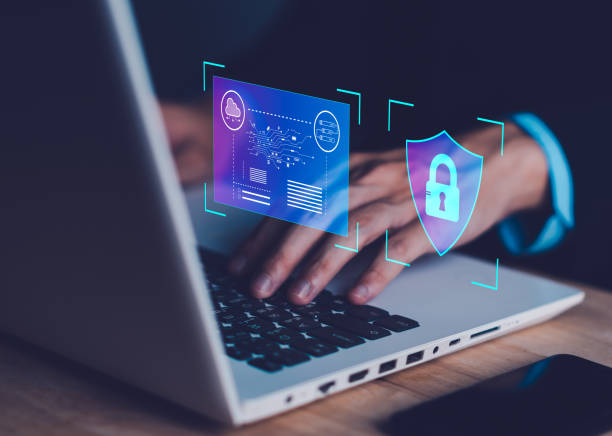Innovation – Why Do Many Shy Away from it?

I read an interesting piece recently where the thrust was that true innovation consists of doing now what you should have done ten years ago. Harsh, maybe, but also fair. I’m constantly reading industry surveys which highlight the low level of cybersecurity maturity amongst large firms and, increasingly, an even lower level amongst smaller firms. We never seem to learn.
Of course, and as I’ve mentioned before, many of these surveys are written, or at least sponsored, by cybersecurity vendors and largish consultancies, who could potentially be seen as biased in that they are pushing their own solutions. But keeping that in mind, there is still and underlying truth.
My focus remains on SMEs, so I’ll skip more talk about the corporate world. In conversation with people I’ve worked with for years, their anecdotal evidence supports the underlying truth of these surveys. SMEs in particular struggle with the basics of good cybersecurity housekeeping, such as monitoring of basic network events, timely removal of user accounts, timely deployment of security patches, and revalidation of access level, particularly privileged access. This list is far from exhaustive. Whilst this message has been pushed over and over by cybersecurity professionals over the last 10-15 years, SMEs continue to rely on technical solutions which simply don’t stack up in many areas. Why? Simple, because they are relying on local IT providers to give them solutions and those IT providers continue to push the technologies that they sell. SME owners and managers are very reluctant to relinquish that argument. Strange when often the best solutions are procedural and as such, much much cheaper than a technology that probably doesn’t quite match up anyway.
Before we go any further, let’s briefly explore some issues that are common amongst SMEs. Some common myths first:
- Small to medium size businesses are not worth attacking.
- Cyber Security is an IT Issue.
- Technology will keep me safe.
- My policies and procedures are up to the job.
- My staff are young and have been brought up with IT. They know the score.
Now let’s look at some of the more common issues that we see often amongst SMEs:
- Lack of awareness around the current real-world cybersecurity risks
- False sense of security, with a heavy reliance and dependence on an external IT third-party provider
- Lack of cybersecurity knowledge, and understanding
- Poor cybersecurity maturity and posture within their businesses
- Lack of staff training (at all levels) – just like Health & Safety, cybersecurity is everyone’s responsibility.
Back to the topic in hand, innovation and how and when should we be seriously considering it. Ideally, we should be constantly looking for innovations, not just to keep us safe, but to encourage efficiency and cost savings, and I’m sure all SME owners would love to have the time and resource to do just that. But we live in the real world and will be cost, and resource constrained. But that’s not an excuse to not keep a weather eye on the need to innovate. We live in a changing world and what we in the business call the threat landscape, changes constantly. This simply means that threats evolve all the time, often to meet new circumstances, and AI for instance, is reducing the response time of cyber criminals to new technologies and changes in working patterns, to almost what is known as the zero day threat, ie zero days from the release of something new, to a threat being created to exploit it.
When COVID hit, many SMEs had to move very quickly to keep going, adopting remote working without the time or luxury of any real planning. It was a knee jerk born of necessity and certainly not the way they would have liked to do it. There are multiple cases of companies not having the necessary equipment, in terms of hardware, desktop, laptops etc, and allowing staff to work from home using their own home machines, connecting to both office and cloud-based systems, without any check on how those machines were configured, whether or not they were kept up to date with the latest patches, or whether they were used by other family members.
In terms of equipment, cloud usage and some working practices, that situation is righting itself, sort of. There are now surveys by HR consulting companies, suggesting that 60 to 70% of companies of all sizes are either planning to, or have adopted a hybrid model. In the IT industry, particularly amongst IT consultancies, this model has been in use for many years and is well regarded, allowing the downsizing of office space and a lower cost base. That new working model has arguably had the biggest effect on working practices and in turn, cyber security as it affects SMEs, since the innovation of IT itself.
So, what needs to be done if hybrid working patterns are to continue? Well, first and foremost comes your policies. Do they reflect the new hybrid working model? Have you laid down what is and what is not an acceptable use of company IT equipment if it’s being transported to a home address? Do you allow the use of home machines, and have you laid down how those machines must be configured before they can be used for company business? That list is not exhaustive.
Secondly comes user training. Cyber awareness training for staff, along with a broad understanding of data protection principles, becomes even more important when staff are working from home. It is a clear no brainer which many SMEs still don’t recognise as necessary.
Of course, those 2 things are hardly innovation, unless of course, you haven’t taken any of those measures and then it becomes innovative within your company. Real innovation perhaps comes from reviewing the technologies you have in place, and have relied on, possibly for years. Most, if not all those technologies will be based on the old bastion model of security, ie a network perimeter with a secure gateway, protecting your assets within that perimeter. With the new working model, relying usually on cloud connectivity, your staff could be working in the office, at home, from a coffee shop etc etc. You now have a mobile workforce. What is needed is real innovation that protects your data regardless of where it is, technologies which themselves are cloud based, not caring where the end point it is monitoring actually is, whilst maintaining cost effective pricing. This is something we’ve been at great pains to research and have now come up with such solutions.
We are holding a webinar to discuss and highlight these solutions and would love to see you there:
Event Details:
- Date: 8th May
- Time: 12pm
- Event link: https://bit.ly/3UDaUy9



Recent Comments